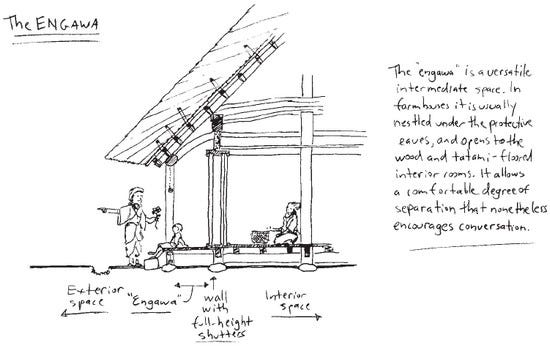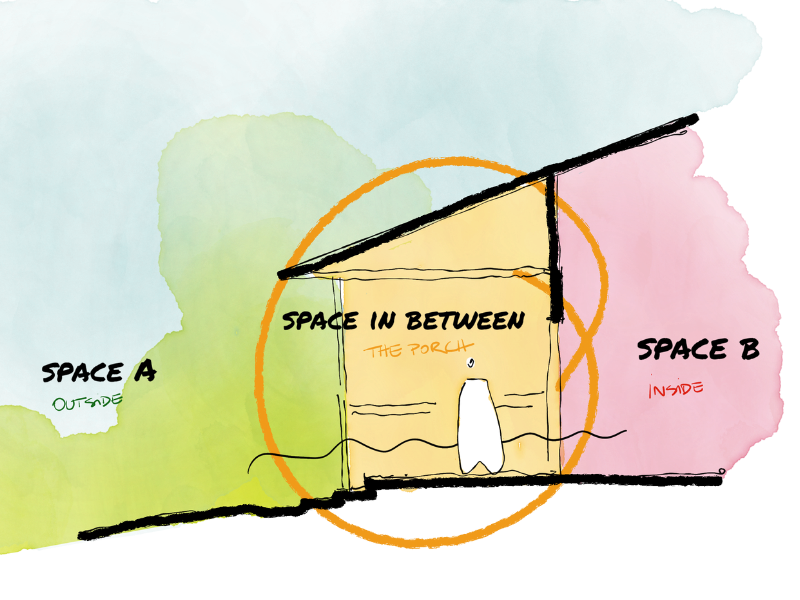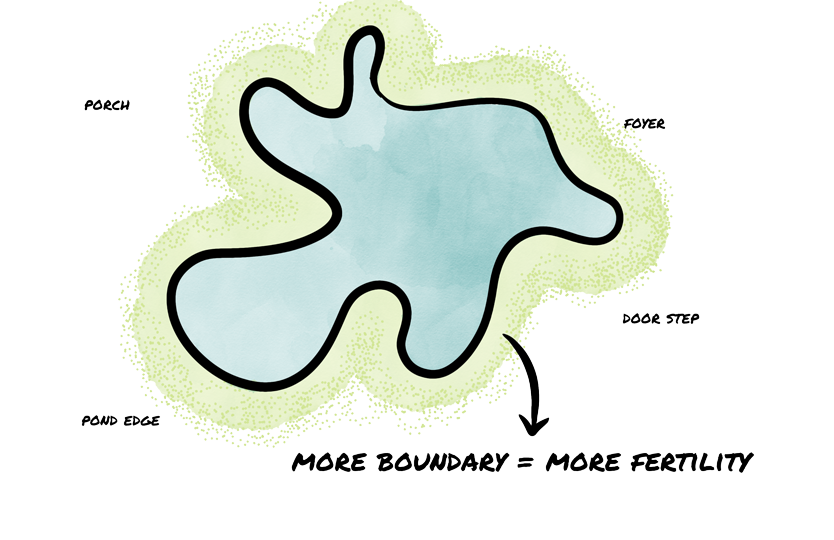What do Doors, Foyers and Engawas have in common?
Laretta Dear, I've got friends on the other side
In the lovely book on Edo period Japan and what we can learn about sustainability from it, there is talk of the engawa.
The raised veranda and the depth of the eaves allows someone seated there to converse easily with someone outside while both are sheltered from sun or rain.
Neighbors can chat informally but sheltered, crops can be hanged to dry, the engawa is an extension of the interior space of the house. An in-between space.
This leads back to the letter I wrote two weeks ago to Trivian, Porches and nostalgia, but that particular piece of thought was taken over by the passing of Christopher Alexander and the Pattern Language experiment (which is advancing nicely, thank you for asking), so here it pops up again.
It is starting to become recurrent.
Doesn’t this above picture look just like this one from two letters ago? Eery..
The topic sprung up again the other day in a conversation with Kristina Horning, an architect, artist and friend. She is currently in the middle of Prague and I, in the middle of nowhere. I told her about missing the artistic buzz of the city. The one thing I miss most is the foyer at the theater. An in-between space again.
We went on to chat about the possibilities of these types of almost undefined spaces and the magic of the boundary in permaculture.
In-between spaces are places of a particular type of magic. In permaculture, the boundaries between two systems are considered more fertile, as they take elements from both systems and add new ones as well.
So, when building a pond for example, they would advise you to build as long and wavy a water edge as possible, to maximize the potential for new boundary magic.
This week a door handle broke in our house. You'll think me silly, but I see handles are our primary connection with a building. Handles are the handshakes a building is giving us. So why are we treating them as a minor thing and getting cheap ones from the hardware store?
Even worse, most modern building handshakes are now cold impersonal metal bits.
Good for microbes, bad for the soul.
Don’t get me wrong, I don’t mind that most door handles are brass or other metal. It is durable and weather resistant. But a bit more personality wouldn't hurt. Art Nouveau had an unparalleled display of fancy door handles. They had fun, those guys! How about us?
Doors are the in-between space par excellence. They embody all the possibilities of “the other side” while being neither here nor there. And the engaging with one is like a Schrodinger’s cat. Or like a box of chocolates. You never know what you’re gonna get.
So here is a most beautiful poem by Kristina Klee Horning:
The door
Today, have you noticed?
Have you noticed when you entered a room or a building how the door sounded when you opened them?
Have you noticed how the door sounded when you closed them?
My door is silent when I approach it. The cool feeling of the metal enters my senses when I touch the metal doorknob.
Almost instantly the metal warms up under my hand and we connect.
The door is still silent.
I push down the lever of the doorknob, there is a click. It is not just one click, it is a short percussion, small musical interlude, release of the latch.
The instant the door is open sounds changes.
There is a whoosh, air moves, spaces meet and the door is still silent.
I pause. The echo changed.
Now, what?
Do I enter through the opening, cross the threshold?
Today I am going through.
When I face the door again and close it, it finally makes sound.
It makes deep, low, double beet, sound.
Friendly sound of farewell..
—
Kristina Klee Horning
What sound does your doorknob make?
As always yours,
Jo
PS. The book on Edo is called “Just Enough: Lessons in Living Green from Traditional Japan” and there’s even a website dedicated to it, it seems.
Other letters from Jo you might enjoy:









